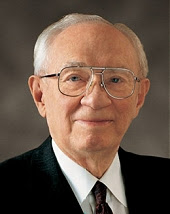Way back in the frontier days when we circled the wagons at the end of the day and hooked up our 300 baud modems, mailing lists were one of the first electronic tools we used for genealogy. As far as mailing lists are concerned, FamilySearch was late in and today they announced they would also be one of the first out.
Users of their mailing list system received notification today. "Effective 13 February 2008, the Collaboration E-mail List feature on the FamilySearch.org web site will be discontinued." Users who wished to remain in contact with one another were advised to exchange e-mail addresses.
RootsWeb Mailing Lists
It is only coincidence that today the Utah Valley PAF User Group (UVPAFUG) used RootsWeb's mailing list system for the last time. List members received a message that began, "A Final Message to All Participants in this Mailing List." UVPAFUG has used RootsWeb's system since July 2000 to announce their monthly meetings. UVPAFUG (no, I don't know how they pronounce that) is abandoning RootsWeb's system in favor of a blog and FeedBlitz subscriptions.
The Ancestry Insider has been hearing rumors of dissatisfaction from several groups with the RootsWeb mailing list system. Ignored for many years by RootsWeb owners—the Generations Network (TGN)—the Insider was told that TGN switched the software used for the mailing lists several months ago and list administrators are not happy with the loss of some key features.
HTML E-mail Formatting
While other solutions allow HTML formatting, or rich text as it is sometimes called, TGN has invested very little in upgrading RootsWeb-related e-mails. Mailing lists are still plain text. The RootsWeb Review became available in HTML just last week.
Message board notifications are another ugly step child. In yet another coincidence, at least some of today's notifications went out with bad links. Here's a representative message showing the ugly formatting as well as the link error.
My Notifications
Board : Boards > Surnames > Rencher
Subject : Nancy Rencher, daughter of John Nelson
Author : BMarshall0572
Date : 29 Jan 2008 4:24 AM GMT
http:///mbexec/msg/an/nEB.2ACE/86
Board : Boards > Surnames > Rencher
Subject : Re: Nancy Rencher, daughter of John
Author : brencher
Date : 29 Jan 2008 5:20 AM GMT
http:///mbexec/msg/an/nEB.2ACE/86.1
Board : Boards > Surnames > Rencher
Subject : Re: Nancy Rencher, daughter of John
Author : BMarshall0572
Date : 29 Jan 2008 5:31 AM GMT
http:///mbexec/msg/an/nEB.2ACE/86.1.1
The Message Board Administration Team
It may be that mailing lists powered by genealogy companies may one day soon disappear entirely.






